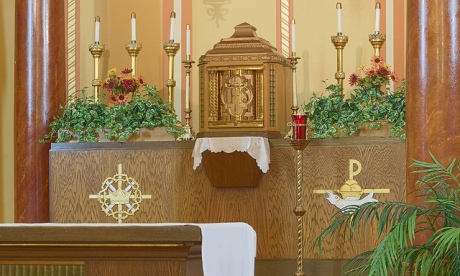An American bishop has directed that tabernacles that used to be in the centre of sanctuaries in churches and chapels are to be returned there.
In a recent pastoral letter, Bishop Thomas Paprocki of Springfield emphasised that devotion to the Eucharist is central to faith.
Bishop Paprocki directed that “tabernacles that were formerly in the centre of the sanctuary, but have been moved, are to be returned as soon as possible to the centre of the sanctuary in accord with the original architectural design”.
In other instances, tabernacles that are not in the centre of the sanctuary, but are in a visible, prominent and noble place, can stay where they are.
But tabernacles that are not in a “visible, prominent and noble” place have to be placed in the centre of the sanctuary, Bishop Paprocki directed.
These directions are so that people can spend more time in adoration and in the presence of the eucharistic Lord.
Bishop Paprocki wrote that proper celebration of the liturgy is “the key to fostering the active participation of the People of God in divine worship”.
So he strongly encouraged serious attention to religious art and architecture, sacred music, and reverent celebration.
In 2009, Fort Wayne-South Bend Bishop John D’Arcy decreed that in churches where the tabernacle is not centrally located, a consultation should begin to determine how to do so.
He issued the norms to end controversy over the placement of tabernacles.
Bishop D’Arcy said the Eucharist should always be “a means of unity and communion and never of division”.
The post-conciliar “Instruction on the Worship of the Eucharist” recommended the Blessed Sacrament be reserved in a prominent location suitable for private prayer and devotion.
It also recommended that the tabernacle be placed in a chapel distinct from the middle or central part of the church.
This is especially in those churches where marriages and funerals take place frequently and which are much visited by the public.
But the instruction left it to local bishops to decide where tabernacles should go, as long as the place is worthy and properly equipped.
Sources
